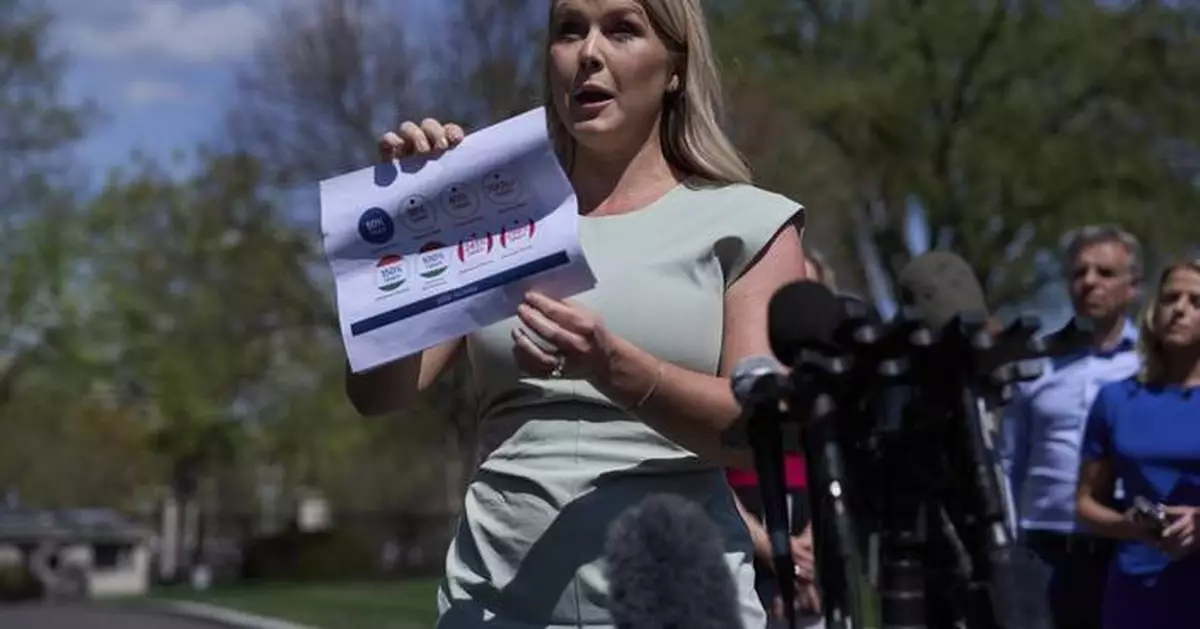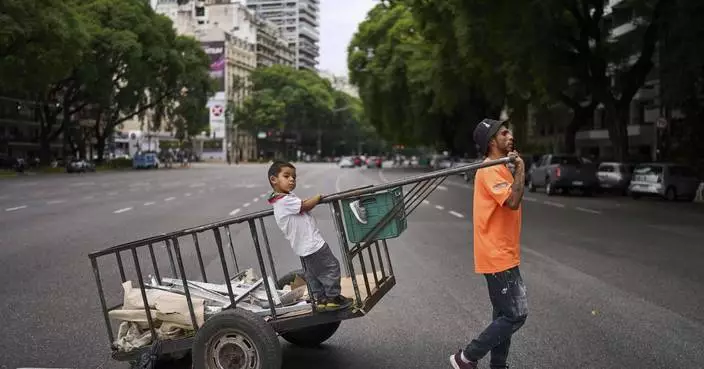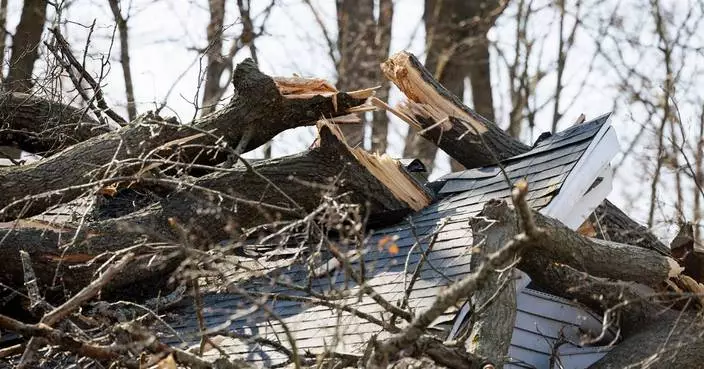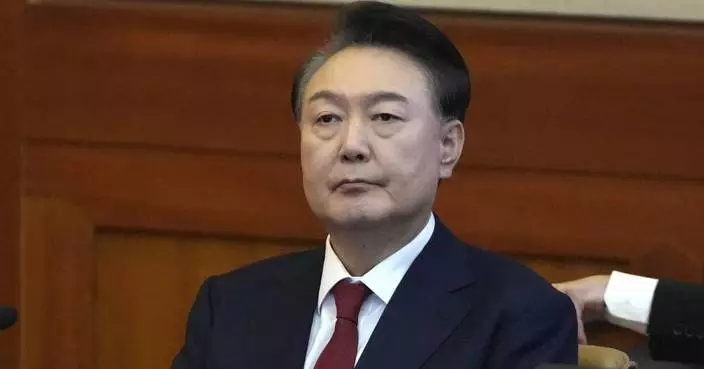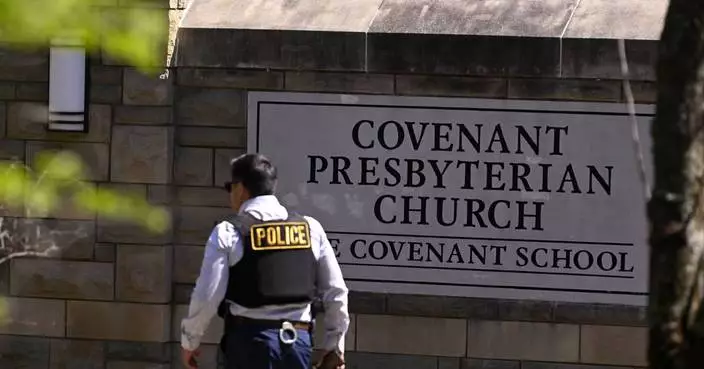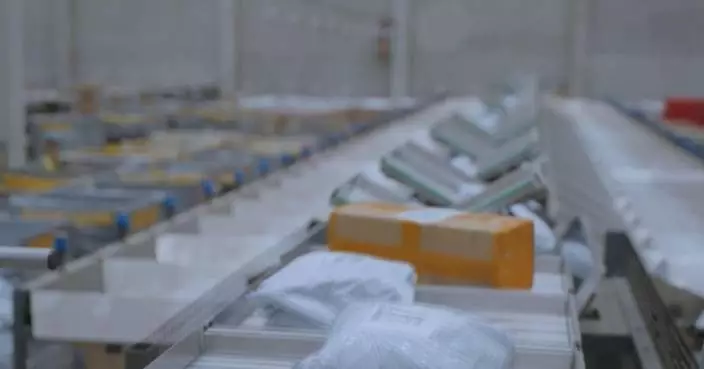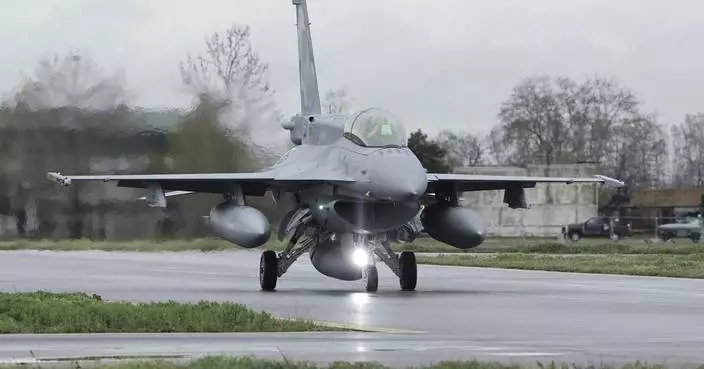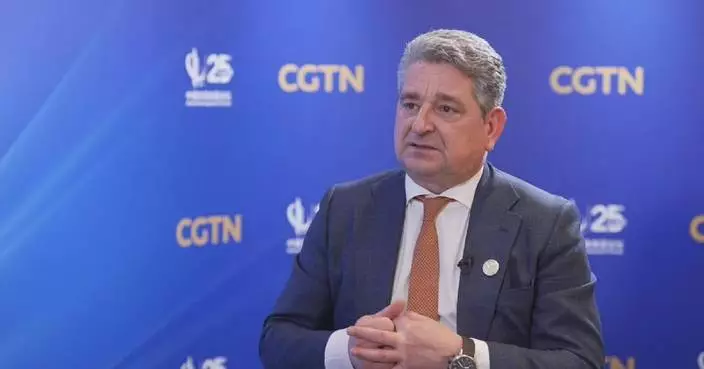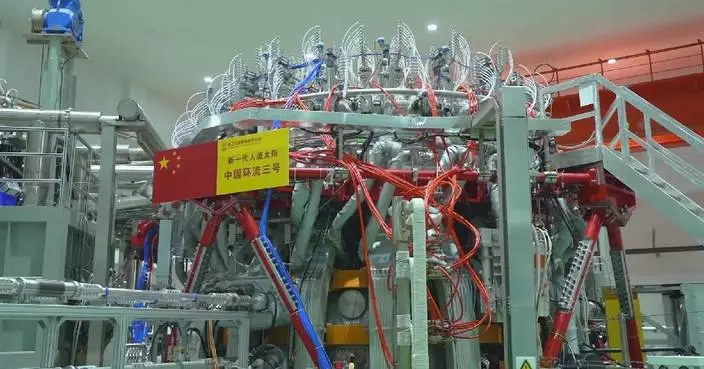NEW YORK (AP) — As the trade wars launched by U.S. President Donald Trump continue to escalate, all eyes are on Wednesday.
Trump has repeatedly called April 2 “Liberation Day,” with promises to roll out a set of tariffs, or taxes on imports from other countries, that he says will free the U.S. from a reliance on foreign goods. To do this, Trump has said he'll impose “reciprocal” tariffs to match the duties that other countries charge on U.S. products.
But a lot remains unknown about how these levies will actually be implemented. White House press secretary Karoline Leavitt said Monday that Trump would unveil his plans to place reciprocal tariffs on nearly all American trading partners on Wednesday, but maintained that the details are up to the president to announce.
Since taking office just months ago, Trump has proven to be aggressive with tariff threats, all while creating a sense of whiplash through on-again, off-again trade actions. And it’s possible that we’ll see more delays or confusion this week.
Trump has argued that tariffs protect U.S. industries from unfair foreign competition, raise money for the federal government and provide leverage to demand concessions from other countries. But economists stress that broad tariffs at the rates suggested by Trump could backfire.
Tariffs typically trickle down to the consumer through higher prices — and businesses worldwide also have a lot to lose if their costs rise and their sales fall. Import taxes already in effect, coupled with uncertainty around future trade actions and possible retaliations, have already roiled financial markets and lowered consumer confidence while enveloping many with questions that could delay hiring and investment.
Here's what you need to know.
Details around Trump's plans remain uncertain. Reciprocal tariffs could take the form of product-by-product duties, for example, or broader “averages" imposed across all goods from each country — or perhaps something else entirely. The rates could reflect what other countries charge as well as their value added taxes and subsidies to domestic companies.
White House trade adviser Peter Navarro told “Fox News Sunday” that the tariffs could raise $600 billion annually, which would imply an average rate of 20%.
Trump has talked about taxing the European Union, South Korea, Brazil and India, among other countries, through these levies. On Monday, Leavitt said Trump had been presented with several proposals by his advisers. She added that the president would make a final decision, but right now was not contemplating any country-wide exemptions from the tariffs.
Previously-delayed import taxes could take effect very soon. Trump’s month-long delay for many goods from Canada and Mexico, for example, is set to elapse in early April. Earlier this month, Trump wrote on his social media platform Truth Social that the extension granted for Mexican imports covered by the U.S.-Mexico-Canada Agreement runs through April 2. But further confirmation around a specific date has not been issued since.
Trump has said he will place a 25% tariff on all imports from any country that buys oil or gas from Venezuela, which includes the U.S. itself, starting Wednesday — in addition to imposing new tariffs on the South American country.
His 25% tariffs on auto imports will start being collected Thursday, with taxes on fully-imported cars kicking off at midnight. The tariffs are set to expand to applicable auto parts in the following weeks, through May 3.
The White House says it expects to raise $100 billion in revenue annually from these new duties, but economists stress this trade action will upend the auto industry’s global supply chain and lead to higher prices for consumers.
Trump imposed a 10% tariff on all Chinese imports beginning Feb. 4, a levy he later doubled to 20% from March 4 onward. And China has hit back with retaliatory tariffs covering a range of U.S. goods, including a 15% tariff on coal and liquefied natural gas products and 10% tariff on crude oil from the U.S. that took effect Feb 10. China also imposed tariffs of up to 15% on key U.S. farm exports starting March 10.
Trump’s expanded steel and aluminum tariffs went into effect earlier this month, too. Both metals are now taxed at 25% across the board — with Trump’s order to remove steel exemptions and raise aluminum’s levy from his previously-imposed 2018 import taxes taking effect March 12.
Canada and Mexico, America’s two largest trading partners, have also faced steep tariffs. Earlier this month, Trump implemented a partial, month-long delay of his 25% tariffs on both countries — delaying taxes for auto-related imports as well as goods that comply with the 2020 US-Mexico-Canada Agreement until early April.
But other imports are still levied, as well as a lower 10% duty on potash and Canadian energy products. In response to these tariffs, as well as the new steel and aluminum import taxes, Canada has rolled out a series of counter measures amounting to billions of dollars on U.S. goods. Mexico, meanwhile, has yet to formally impose new levies — signaling it may still hope to de-escalate the trade war, although the country previously promised retaliation to Trump’s actions.
Even more tariffs from Trump are likely, with the president also threatening import taxes on products like copper, lumber, pharmaceutical drugs and computer chips.
And many countries have promised retaliatory measures — if not already imposed them, like Canada. Trump has said he won't negotiate with other countries on Wednesday's tariffs until after they're imposed, though he has said his 25% taxes on auto imports would be permanent.
In response to Trump's steel and aluminum tariffs, the European Union announced measures on U.S. goods worth some 26 billion euros ($28 billion) — to target steel and aluminum products, but also American beef, poultry, bourbon, motorcycles, peanut butter and jeans. The 27-member bloc had intended to roll out this retaliatory trade action in two phases, on Tuesday and April 13, but later said it will delay it until mid-April, without giving a specific date.
We'll potentially see more retaliatory announcements this week, particularly if Trump confirms more details of sweeping reciprocal tariffs on Wednesday.
Associated Press Writers Josh Boak and Zeke Miller in Washington contributed to this report.
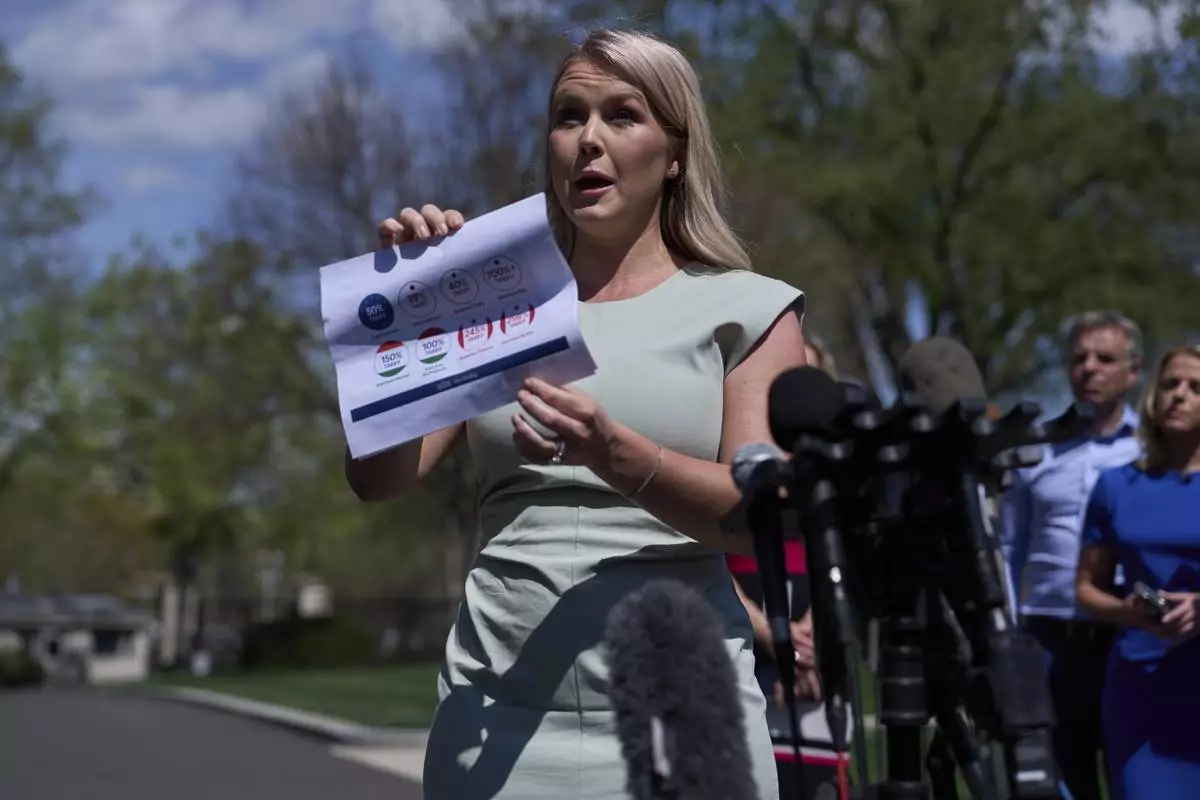
White House press secretary Karoline Leavitt speaks with reporters at the White House, Monday, March 31, 2025, in Washington. (AP Photo/Evan Vucci)
The new tariffs announced Wednesday by U.S. President Donald Trump were met initially with measured reactions from key trading partners, highlighting the lack of appetite for a full-fledged trade war.
Trump presented the import taxes, which he calls “reciprocal tariffs” and range from 10% to 49%, in the simplest terms: the U.S. would do to its trading partners what he said they had been doing to the U.S. for decades.
European Commission President Ursula von der Leyen said they are a “major blow to the world economy,” while a Japanese official called them “extremely regrettable” and Korea's prime minister called for emergency measures to support industries affected by the tariffs. Asian markets tumbled in Thursday morning trading.
Here's the latest:
The Thai prime minister says her country is ready to negotiate with the U.S. to find a fair trade balance for both sides, after Trump announced 36% tariffs on Thailand.
Paetongtarn Shinawatra said Thursday that Thailand is committed to working with the U.S. to achieve sustainable economic growth.
She added that Thai exporters should also look for additional markets for their products to reduce their risk of relying on one main market.
Indian exporters and analysts say Trump’s new tariffs are a mixed bag for the country.
Trump announced a reciprocal tariff of 26% for India, as compared to 34% for China, 46% for Vietnam, 37% for Bangladesh and 36% for Thailand.
Observers said Thursday the move will likely impact Indian industry and pressure jobs, but that there is room for new business to come in since India is in a lower band than its Asian peers.
“These tariffs do present challenges, but India’s position remains comparatively favorable,” said S.C Ralhan, president of the Federation of Indian Exports Organisations.
Ajay Srivastava, a former Indian trade official and founder of the New Delhi-based think tank Global Trade Research Initiative, said the protectionist tariff regime could be a catalyst for India to gain from global supply chain realignments.
Vietnam, Sri Lanka and other countries across South and Southeast Asia are the targets of some of the highest tariff rates.
Trump imposed 46% “reciprocal” duties on goods from Vietnam, 49% on products from Cambodia, 37% on Bangladesh and 44% on Sri Lanka.
The duties will affect domestic exporters to the U.S. but also Chinese, Japanese and South Korean companies that have over the past few years shifted production to Southeast Asian nations to escape the trade frictions during Trump’s first term in office.
Automaker Stellantis will shut down its assembly plant in Windsor, Canada, for two weeks from April 7, the local union said late Wednesday.
The president of Unifor Local 444, James Stewart, said more scheduling changes were expected in coming weeks.
“The company said there are multiple factors at play, with the primary driver behind the final decision being this afternoon’s announcement from U.S. President Donald Trump of the U.S. tariffs,” Stewart said. “This has and continues to create uncertainty across the entire auto industry. This is not just affecting our plant—it’s impacting facilities in the U.S. and Mexico as well.”
European Commission President Ursula von der Leyen says the tariffs are a “major blow to the world economy.”
“The consequences will be dire for millions of people around the globe,” von der Leyen said. Groceries, transport and medicines will cost more, she said, “And this is hurting, in particular, the most vulnerable citizens.”
Von der Leyen acknowledged that the world trading system has “serious deficiencies” and said the EU was ready to negotiate with the U.S.
Japan’s chief cabinet secretary has called the tariffs “extremely regrettable,” saying officials thought the country deserved an exemption, after Trump slapped 24% additional tariffs on Japan.
Yoshimasa Hayashi on Thursday also questioned whether the tariffs are compatible with Japan-U.S. bilateral trade agreements and said the move would likely impact their economic ties, as well as the global economy and multilateral trade system.
He said Japanese officials are continuing to negotiate with Washington seeking an exemption. Asked if Japan would consider retaliatory tariffs or file complaints with the World Trade Organization, Hayashi declined to comment.
Tokyo’s Nikkei 225 index dipped more than 3.4%, while the Kospi in South Korea dropped 1.8%. In Australia, the S&P/ASX 200 also sank 1.8%.
U.S. stocks whipped through another dizzying day before Trump’s unveiled the tariffs Wednesday. The S&P 500 rose 0.7%, and the Dow gained 0.6%. The Nasdaq composite surged 0.9%.
Tesla swung from a sharp loss in the morning to a gain later in the day to help pull the market higher. Treasury yields also veered from lower to higher following a better-than-expected report on the job market.
▶ Read more about markets’ reaction to the tariffs
House Majority Whip Tom Emmer fielded mostly friendly questions during an hourlong telephone town hall with constituents in Minnesota.
House Speaker Mike Johnson has encouraged Republican lawmakers to avoid holding in-person town halls where they’d run the risk of hostile questioning and protesters.
Emmer extensively praised the actions that Trump has been taking in his first months back in office, including the tariffs he announced earlier Wednesday.
“How about we give this guy some grace while he tried to actually do what he’s been campaigning on for years and his mission to protect American companies and workers?” Emmer said. “There’s still going to be some choppy waters, but when we come out the other side, it’s going to be much better than it was beforehand, and certainly much better than it was the last four years.”
South Korea’s acting leader called for swift emergency measures to support the auto industry and other businesses potentially affected by the Trump administration’s new tariffs, pledging full government efforts to address what he described as a looming “global tariff war.”
During an emergency government meeting, Prime Minister Han Duck-soo also instructed officials to work with business groups to analyze the impact of the U.S. tariff increases and actively engage in negotiations with Washington to “minimize damage” to South Korea’s economy, the trade ministry said.
Han, serving as South Korea’s acting leader while President Yoon Suk Yeol remains impeached over his December imposition of martial law, convened the meeting with trade and foreign policy officials after Trump announced a 25% tariff on South Korea.
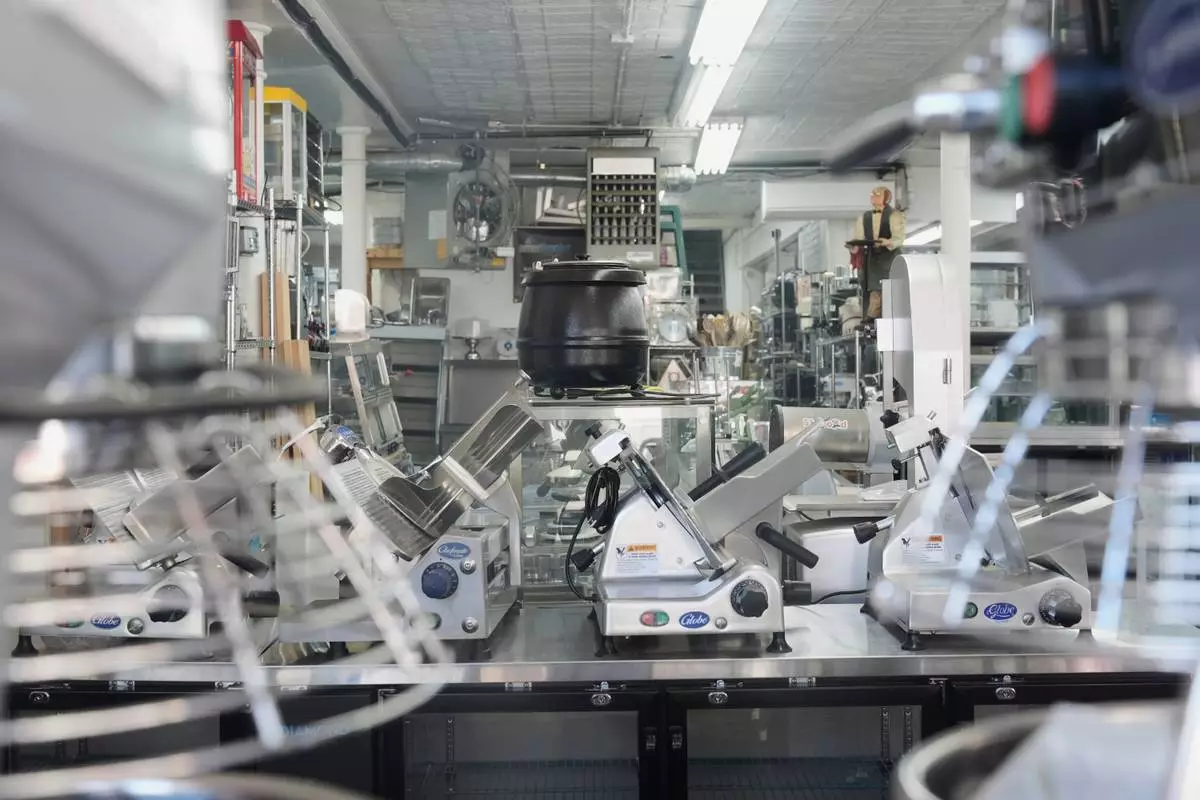
Merchandise is displayed in a kitchen and restaurant supply store in New York, Tuesday, April 1, 2025. (AP Photo/Seth Wenig)
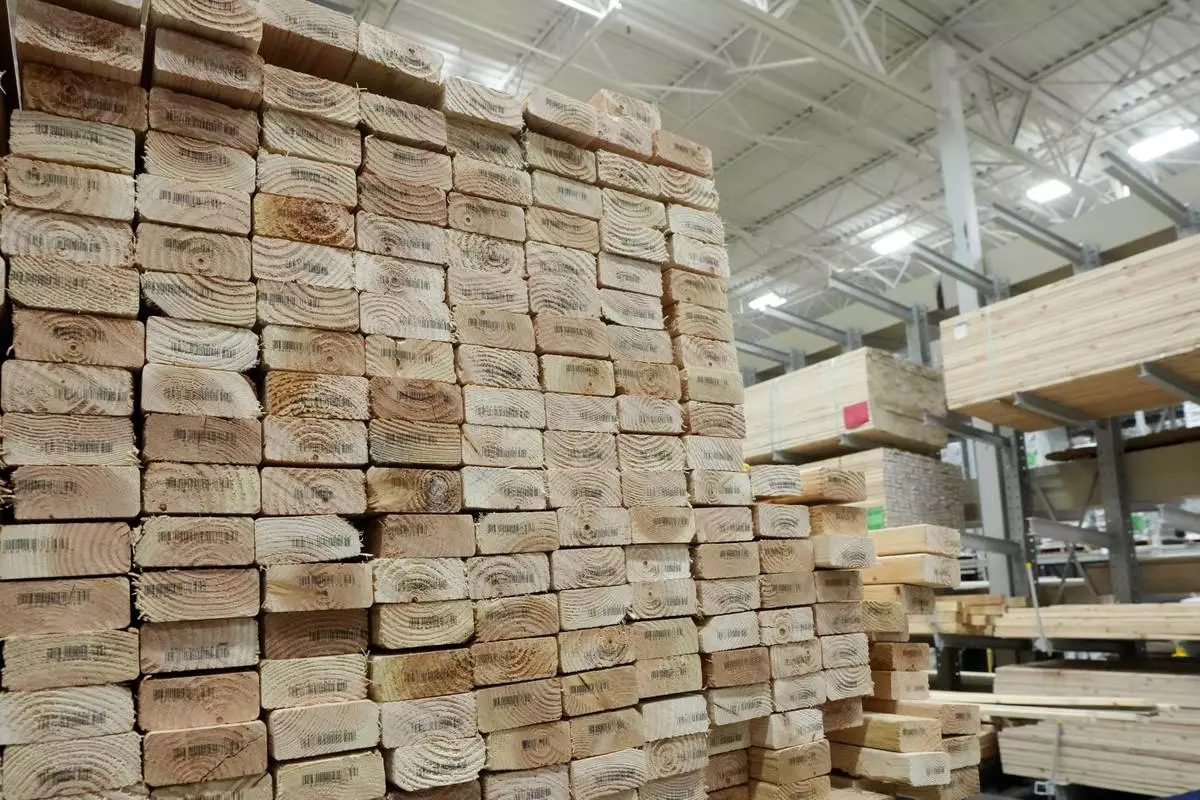
Stacks of lumber are set up on shelves at a local Lowes store Tuesday, April 1, 2025, in Tempe, Ariz. (AP Photo/Ross D. Franklin)



